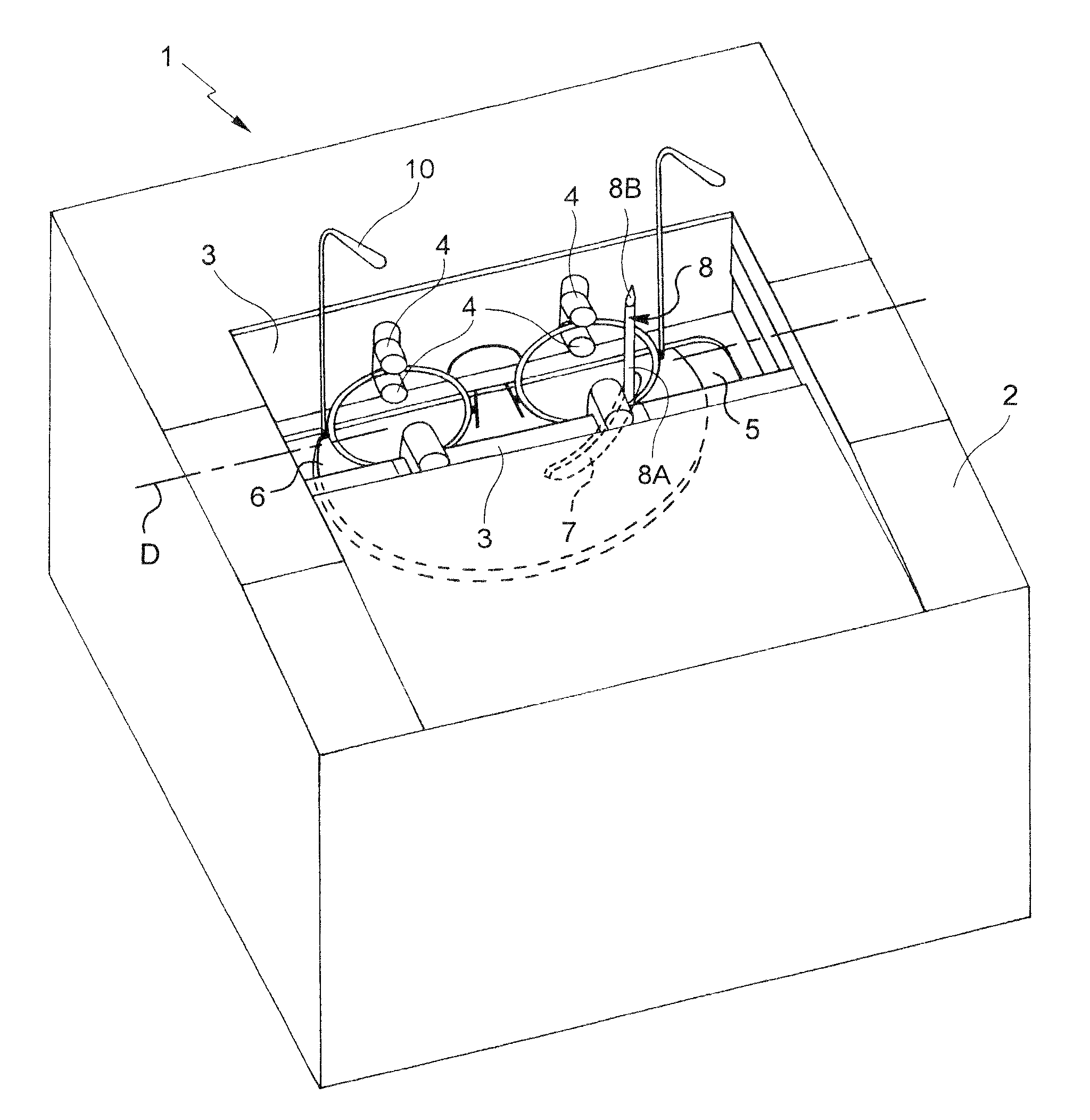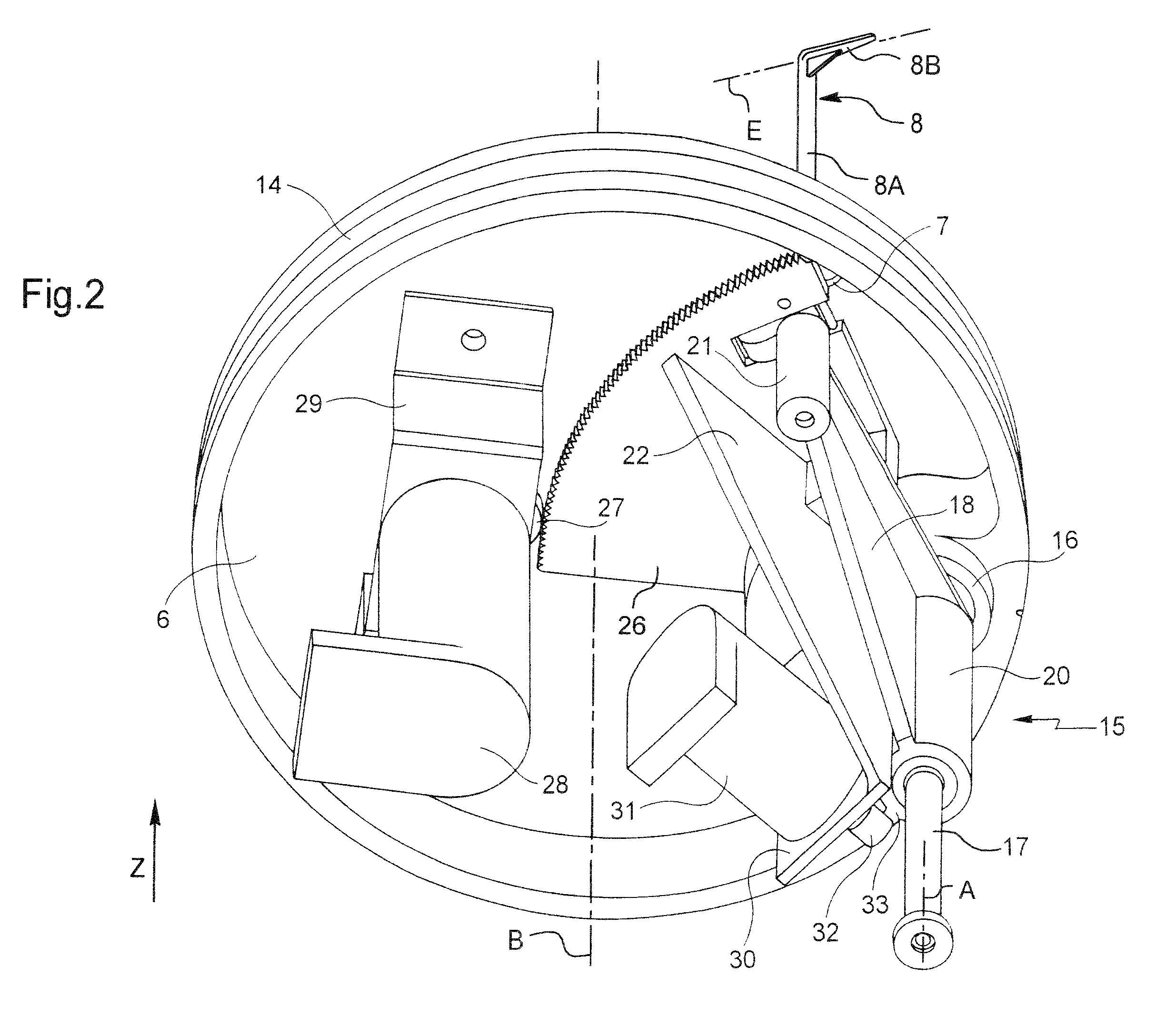Method of controlling a feeler to read the bezel of an eyeglass frame
a technology of eyeglass frames and feelers, which is applied in the field of eyeglasses, can solve the problems of the feeler not being able to accurately follow the bottom of the v-shaped bezel, the risk of the feeler escaping from the bezel by sliding along the side surface, and the curvature of the path followed by the feeler along a first axis
- Summary
- Abstract
- Description
- Claims
- Application Information
AI Technical Summary
Benefits of technology
Problems solved by technology
Method used
Image
Examples
Embodiment Construction
[0030]The following description with reference to the accompanying drawings that are given by way of non-limiting example makes it clear what the invention consists in and how it can be implemented.
[0031]In the accompanying drawings:
[0032]FIG. 1 is a perspective view of an outline reader appliance receiving an eyeglass frame from which the shapes of the rims are to be read by a feeler;
[0033]FIGS. 2 and 3 are perspective views of the underside of the turntable taken from the FIG. 1 appliance, these FIGS. 2 and 3 showing the reader subassembly carried by the turntable as viewed from two different angles;
[0034]FIG. 4 is a section view of the rims of shape that is read by the feeler;
[0035]FIG. 5 is a plan view of the eyeglass frame showing the camber of each of the rims; and
[0036]FIGS. 6A and 6B are section views of the bezel of a rim, at two points around its outline.
[0037]FIG. 1 is a general view of an outline reader appliance 1 as it appears to its user. This appliance includes a top...
PUM
 Login to View More
Login to View More Abstract
Description
Claims
Application Information
 Login to View More
Login to View More - R&D
- Intellectual Property
- Life Sciences
- Materials
- Tech Scout
- Unparalleled Data Quality
- Higher Quality Content
- 60% Fewer Hallucinations
Browse by: Latest US Patents, China's latest patents, Technical Efficacy Thesaurus, Application Domain, Technology Topic, Popular Technical Reports.
© 2025 PatSnap. All rights reserved.Legal|Privacy policy|Modern Slavery Act Transparency Statement|Sitemap|About US| Contact US: help@patsnap.com



